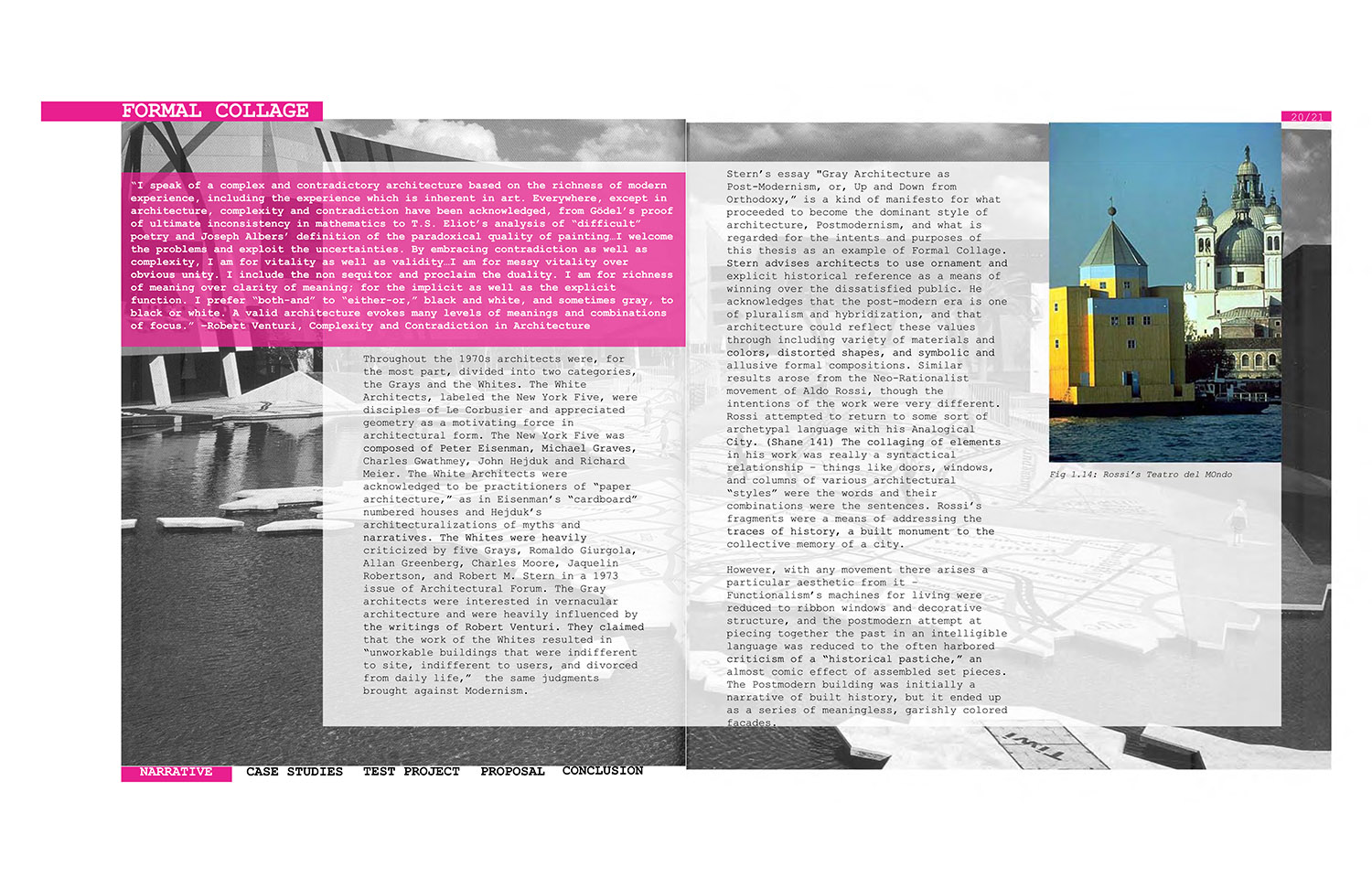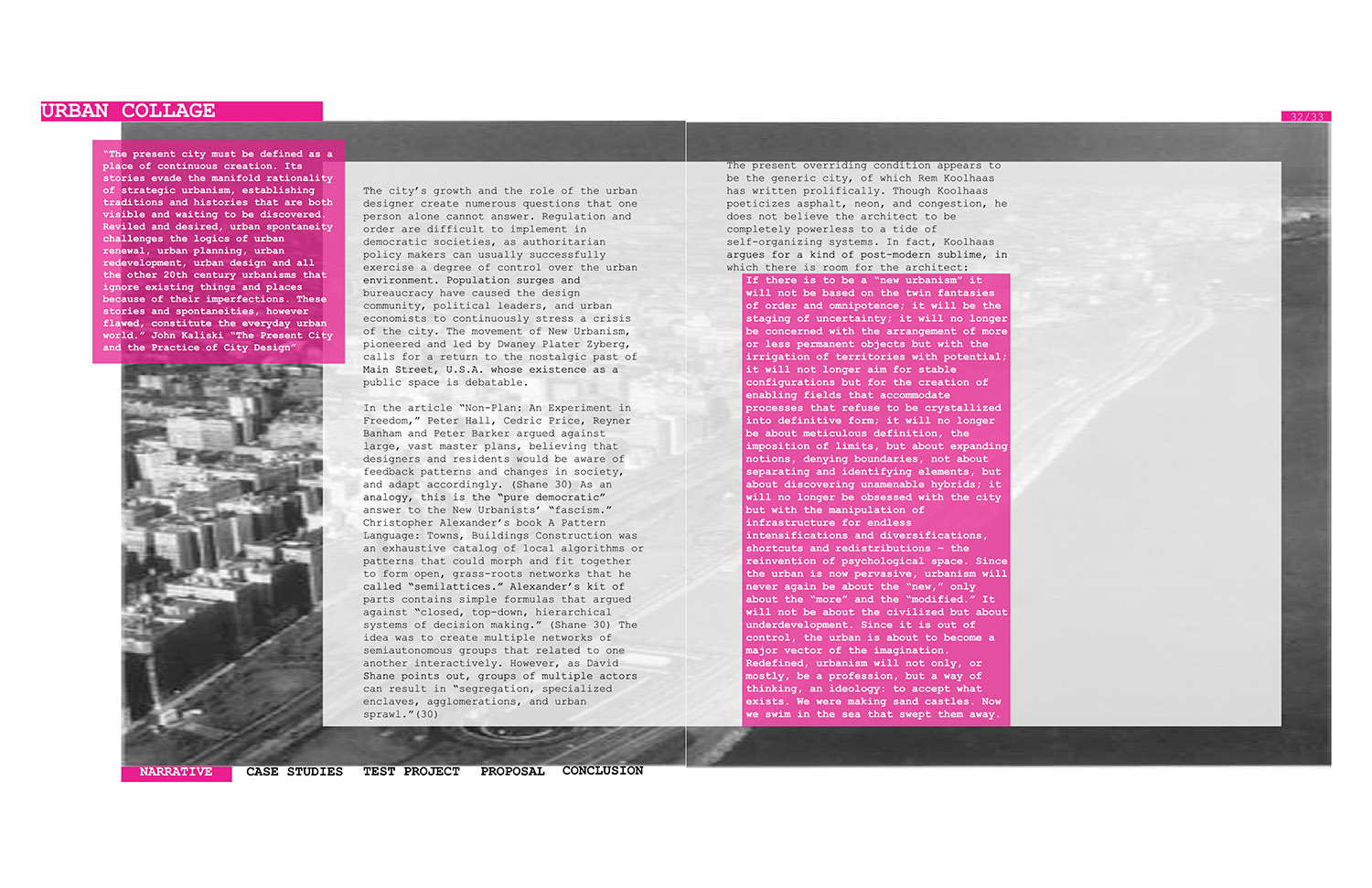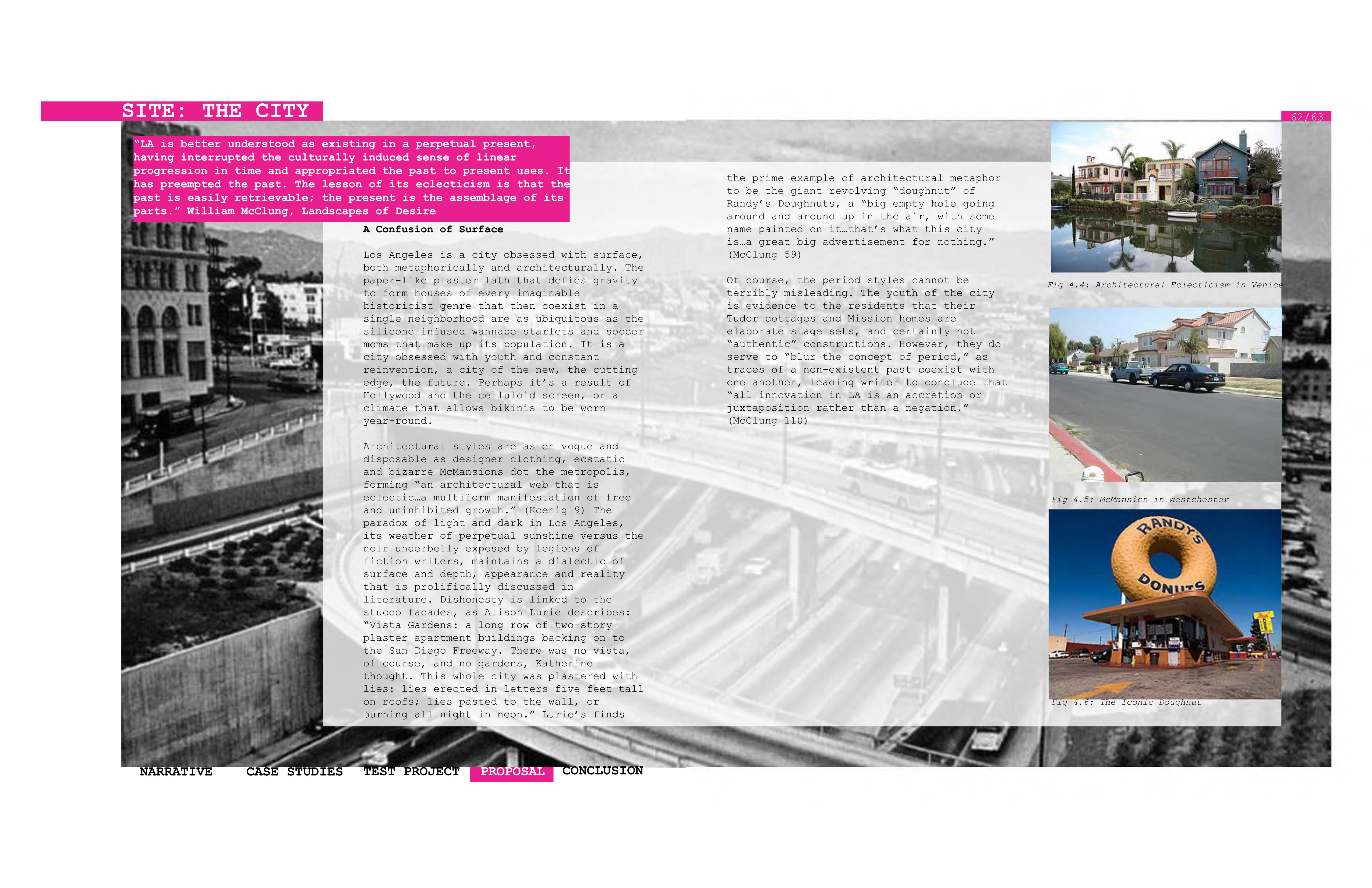This thesis investigation took place at the Tulane School of Architecture during Fall 2007 under the advisement of Irene Keil and in Spring 2008 under the advisement of Ligia Romer

Abstract
We live in a world of multiple conflicting, simultaneously correct yet opposite forces. The global consciousness of our society has eliminated prior beliefs of absolute truth and created widespread acknowledgement of the validity of different agendas, cultures, and ideas. If architecture is “the will of an epoch translated into space,” (Lambert 268) as Mies van der Rohe once claimed, it must reflect the pluralism of the present time. The art form of collage has been called “a metaphor for the universal becoming,” (Kuspit 43) due to its piecemeal nature, conflicting relationships, competing hierarchies, and role as a giver of new life to discarded objects. What are the architectural implications of collage and how might it engender a built form that captures the dynamism and regenerative virtues of the art form? The intent of this thesis is not to propose an architecture of collage, but one that embodies the present conditions of the modern world handled so well with collage, that of juxtaposition, fragmentation, and synthesis, while creating a product that rejects stasis and embraces adaptation and continuous fluid production.
Collage is an amalgamation of elements, some found, others that are modified, and others that are purely formal, within the context of a frame and canvas. This art form translates architecturally quite easily. Collage can be investigated in a number of ways: formally, diagrammatically, urbanistically, programmatically and found object. Undertaking an investigation of these interpretations of collage as a design methodology is necessary to understand the implications of applying the art to architecture.
All preceding examples of collage application to architecture can be understood as process-driven applications. Collage is, by its nature, never finished. It is always becoming, morphing and changing, a truly ephemeral art, whereas a building reaches its perfection upon completion of construction and the passing of time will generally result in its entropic decay. Collage embodies cycles of conception, death, and rebirth. In the discipline of landscape design, a site is considered throughout time, and certain parameters are set up in which a thing can grow and change, in a way that is not always predictable. There is a clear method to the way a space is initially designed and formed, usually with a systemic planning process, but the outcome can allow for the unanticipated. R.E. Somol discusses the shift in the design community from an emphasis on “space and structure” to one of “surface and contingent event.” These two principles are being explored by designers through a new understanding of “landscape-as-process.”(128) Therefore one last category that will be analyzed is ecological collage.
Through the investigations of the applicability of collage as both generator and built form, this thesis proposal explores the program of a recycling center and it’s accompanying cultural components located on the site of a former rail yard along the edge of the Los Angeles River.
TEST PROJECT


































